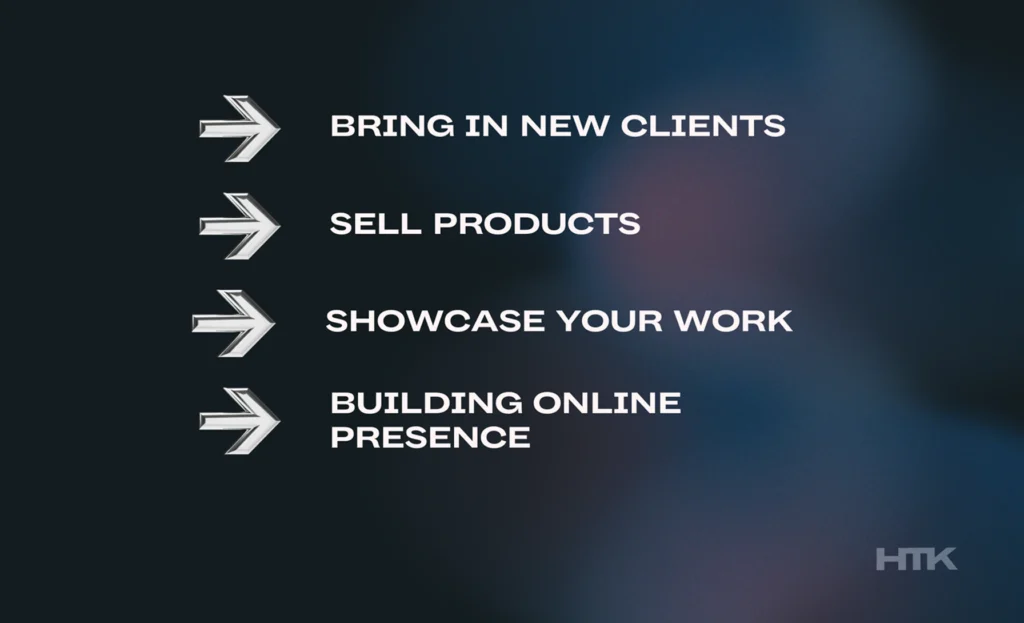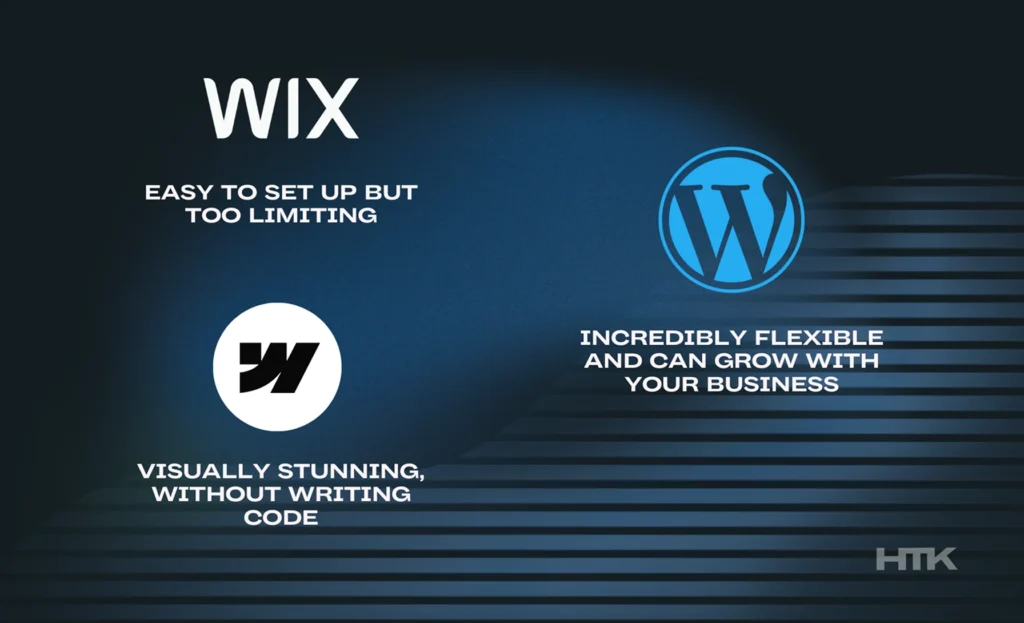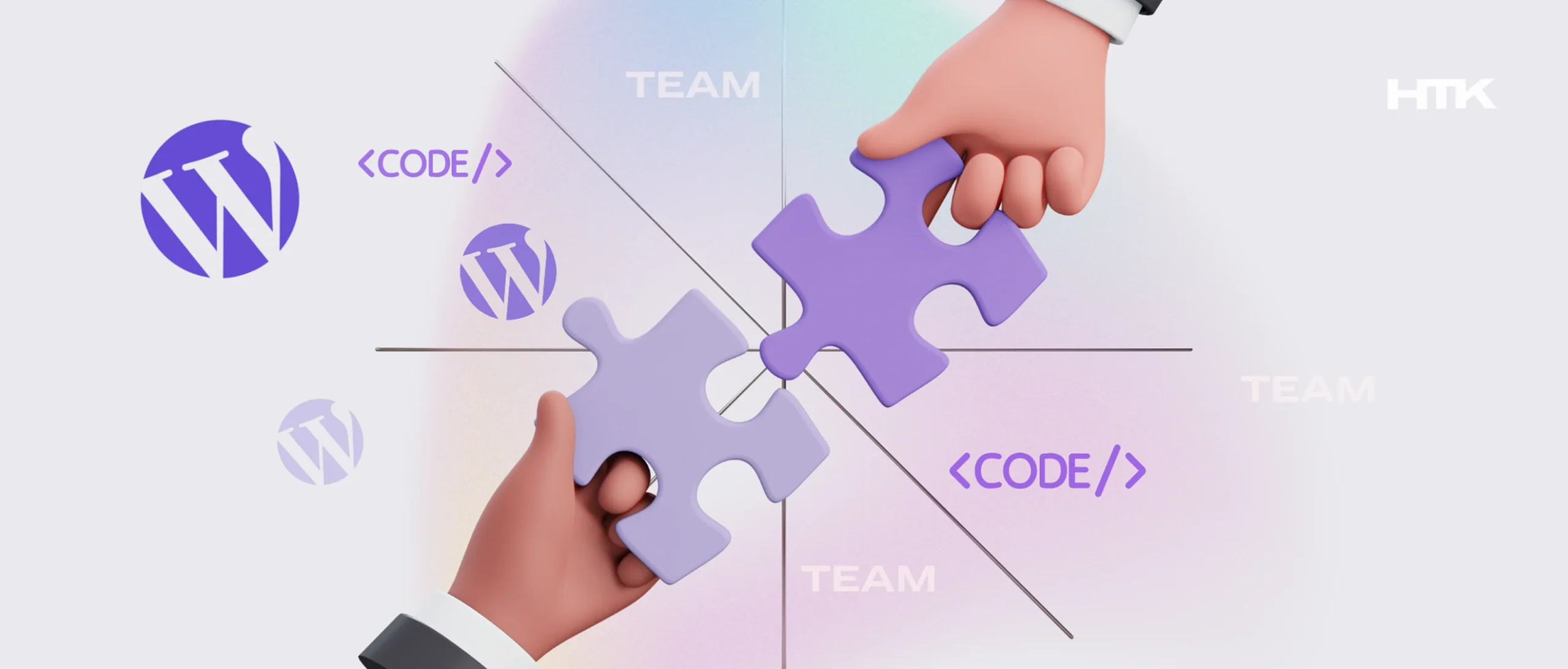Startup website checklist: your complete guide to building a powerful startup website
- What do you want your website to do?
- Finding the perfect domain name
- Choosing the right hosting for your startup website
- Choosing the best website platform
- Planning your website’s structure
- Designing a site that looks great and works smoothly
Starting a new business is always an adventure, but without a well-planned startup website, even the best ideas can struggle to get noticed. Your website is more than just a digital address—it’s your first impression, your 24/7 salesperson, and your main marketing tool.
A startup website isn’t just about throwing up a logo and a few pretty pages. It’s the foundation of your online presence—and if done right, it becomes a tool that works for you 24/7. That means focusing on speed, security, SEO, and scalability.
This guide gives you the playbook. Whether you’re starting fresh or improving what’s already there, you’ll get real, actionable tips that make a difference. And if you’re short on time or dev support, a good web development outsourcing company can handle the heavy lifting while you focus on growing the business.
What do you want your website to do?

Before you jump into design or choose a platform, take a step back. Think about what you actually want your website to accomplish. Is it there to bring in new clients? Sell products? Showcase your work? Or maybe it’s a platform for building your brand’s online presence.
Getting clear on your website’s purpose is the first and most important step. Without a clear goal, your site can end up as a confusing mix of pages that don’t connect to your business objectives. So, start by writing down what you want your website to do.
If you’re running a service-based business, your startup website should focus on lead generation—getting potential clients to contact you.
For a startup e-commerce website, the focus is sales—converting visitors into buyers.
A startup website designed as a portfolio should highlight your work and make it easy for clients to understand what you offer.
Getting clear on your website’s purpose is the first and most important step. Without a clear goal, your site can end up as a confusing mix of pages that don’t connect to your business objectives. So, start by writing down what you want your website to do.
Finding the perfect domain name
Finding the perfect domain name is one of the first steps in building your brand online. It should be easy to remember, simple to spell, and clearly connected to what you do. Whether you’re launching your startup solo or with a white label team supporting your development, your domain sets the tone for how people find and remember you. But choosing a great domain name is easier said than done.
- Start by brainstorming a few options. Aim for something short and brandable.
- Avoid complicated words, numbers, or hyphens, which can confuse visitors.
- Consider small tweaks like adding a location (brightpathny.com) or using a relevant keyword (brightpathdigital.com).
- Stick with trusted providers like Namecheap, GoDaddy, or Google Domains.
- Set up automatic renewal to avoid losing your domain accidentally.
If the exact domain you want isn’t available, consider small tweaks—like adding a location (brightpathny.com) or using a relevant keyword (brightpathdigital.com). And while .com is the most common extension, don’t be afraid to consider other options like .co, .io, or .net if they fit your brand.
Once you’ve settled on the perfect domain name for your startup, it’s time to lock it down. Stick with trusted providers like Namecheap, GoDaddy, or Google Domains. To avoid any unpleasant surprises, make sure you set up automatic renewal. Nothing’s worse than losing your domain because you forgot to renew it—and watching someone else snap it up.
Choosing the right hosting for your startup website

Your startup website’s performance depends heavily on your hosting choice. If you’re just getting off the ground and don’t expect a flood of traffic, shared hosting can be a budget-friendly option. But remember, shared hosting means your site is sharing space with many others. If one of those sites gets busy, your site can slow down.
If you’re planning for your startup to grow quickly, cloud hosting is worth considering. It’s flexible, letting your site handle more visitors without slowing down. But if you’re after the fastest speeds and the best security, a dedicated server might be a better fit. Sure, it costs more, but you’re getting a server all to yourself—no sharing, no surprises.
Some startups initially go with website builders because they seem convenient, but performance and flexibility often suffer later on. If you’re weighing that route, it’s worth understanding why website builders are bad for long-term growth and scalability.
Not all hosting providers are created equal. Sure, pricing matters—but it’s not the only thing worth considering. What really counts is how reliable they are when it matters most. Look for providers that keep your site online consistently (aim for at least 99.9% uptime), load pages quickly, and respond when you run into issues. For early-stage startups, services like SiteGround, Bluehost, and Kinsta have built a good name by offering strong support and dependable performance.
It’s easy to overlook hosting as just a technical detail, but it’s the foundation your entire site runs on. If it’s unstable, everything else—no matter how well designed—can fall apart. Poor hosting means longer load times, possible downtime, and in some cases, security risks you didn’t bargain for. Choose wisely.
Choosing the best website platform
Website builders like Wix or Squarespace can be a quick fix when you’re just starting out. They’re easy to set up, and you don’t need any technical skills to get your site online. But as your startup grows, you might find them too limiting. Customizing designs, adding advanced features, or improving SEO can be a challenge.
For most startups, WordPress is a better choice. It’s incredibly flexible and can grow with your business. Want a simple blog? No problem. Need a full e-commerce store? There are plugins for that. WordPress gives you access to thousands of themes and plugins, so you can add almost any feature you can think of without starting from scratch. If you’re an agency looking to scale efficiently, consider exploring our WordPress outsourcing services for agencies — a reliable way to get high-quality development support without expanding your in-house team.
If you’re more focused on design and want creative freedom, Webflow is another great option. It lets you build visually stunning websites without writing code, making it perfect for startups that want a custom look without hiring a developer.
Planning your website’s structure
A well-organized website is easier to navigate, which means better user experience and stronger SEO. Start with a basic sitemap—a list of your main pages. For most startups, this means:
- A homepage that introduces your brand.
- An about page that tells your story.
- A services or products page that explains what you offer.
- A contact page with a form and your social media links.
- A blog (optional) for sharing insights, boosting SEO, and engaging your audience.
Think about how visitors will move through your site. Keep the navigation clean, avoid clutter, and make sure related content is grouped logically. If you’re building from scratch—or thinking about overhauling an outdated site—here’s a helpful resource on why build a new website and what it can do for your brand.
Your structure should support your goals and help users find what they need without digging. When done right, it can guide people from curious visitors to paying customers in just a few clicks.
Designing a site that looks great and works smoothly
A beautiful startup website is a good start—but looks alone won’t keep visitors around. If the site is confusing to use or loads slowly, people will leave before they ever learn what you offer. That’s why simplicity, usability, and performance should guide every design choice.
Stick with clean layouts, use whitespace to avoid visual clutter, and choose fonts that are easy to read. Keep your color scheme consistent and aligned with your brand. And don’t forget mobile—more than half of your traffic will likely come from smartphones or tablets, so your site needs to perform well on all screen sizes.
Images are another key part of the user experience. Use high-quality visuals, but make sure they’re optimized so they don’t slow down your load times. This is where working with a trusted startup outsourced development team can help you strike the right balance between design and performance.
A well-designed site doesn’t just look good—it works smoothly, builds trust, and helps convert visitors into customers.
You don’t have to figure it all out by yourself. At Hutko.dev, we’ve spent years helping startups turn their ideas into fully functional, high-performance websites. Whether you need a brand-new site or want to make your existing one faster, more secure, and ready to scale, we’re here to help. Our team knows how to create websites that don’t just look good—they actually drive results. Want to see how we can support your business? Let’s talk.

Free website strategy session with a senior web expert
For over a decade, we’ve helped startups, SaaS companies, and service brands build high-performing websites that drive real results. Whether you’re planning a redesign, launching a new product, or need to scale your platform—our technical and UX expertise can help you move faster and smarter.
Ready to talk? Connect with a lead developer at Hutko.dev for a FREE 30-minute strategy call. Let’s map out your next step, together.
Book a Free Call





